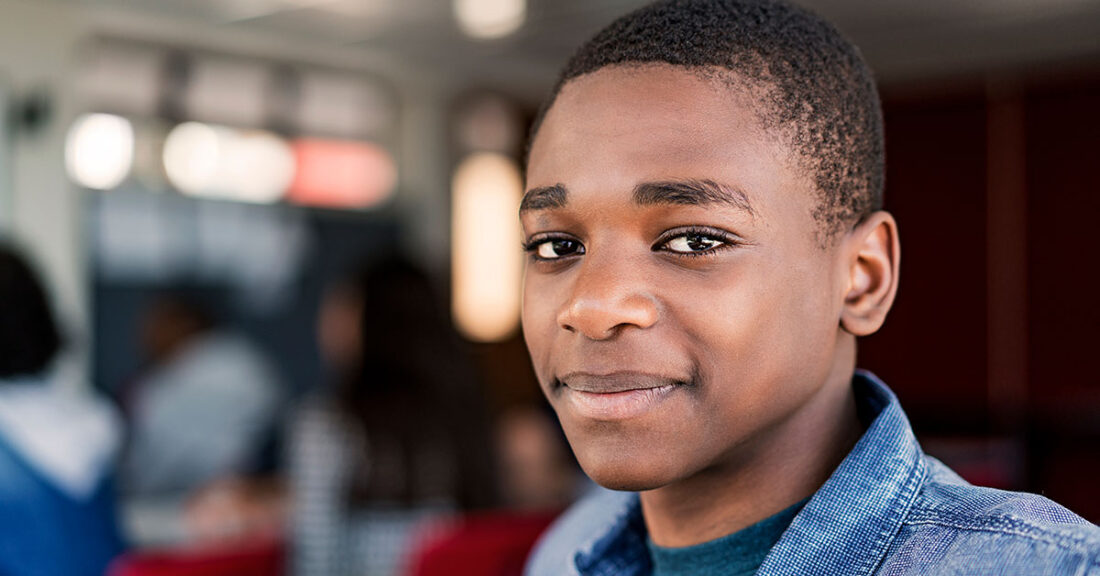Studies Show Dramatic Racial Disparities in Front End of Juvenile Justice System

Two peer-reviewed studies document an alarmingly unequal juvenile justice system, particularly for Black youth. The studies point to systemic responses that result in harsher treatment for youth of color — especially Black youth — than non-Hispanic white youth at the front end of juvenile justice, starting with police encounters before young people even reach high school. Glaring disparities by race and ethnicity persist, according to the studies, and differences in behavior cannot account for the overrepresentation of youth of color in the justice system.
“All young people should be able to mature into adulthood without being thrown off track by the negative effects of justice system involvement,” says Jaquita Monroe, a senior associate with the Annie E. Casey Foundation. “The more that research tells us about the systemic bias that’s disproportionately harming Black, Latino and other youth of color, the more urgent it becomes to address predictable adolescent misbehavior outside of the legal system.”
Monroe leads the Foundation’s work with jurisdictions to significantly expand their use of diversion, which means holding youth accountable for their behavior without resorting to legal sanctions, court oversight or the threat of confinement. The alternative — arresting young people and formally processing their cases in juvenile court — increases their likelihood of subsequent arrests, school struggles and employment challenges.
Study 1: Police Encounters By Eighth Grade Increase the Likelihood of Future Arrests for Black Youth
Researchers found that a far higher share of Black students than white students were stopped and questioned by police by the time they were in eighth grade, even though delinquent behavior was roughly equal between the two groups. Experiencing a police encounter by eighth grade dramatically increased the likelihood of a future arrest for Black youth, but not for white youth. Indeed, Black students who reported they had experienced a police encounter by eighth grade were 11 times more likely to be arrested at age 20 than their white peers. The study reveals the compound nature of the disadvantages to Black youth: they are more likely to have early contact with police than white youth, and early contact affects them more negatively than it affects white youth.
“Police encounters represent the first step in a complex process that exacerbates racial inequities,” wrote the authors of the study. The study tracked 261 Black or white non-Hispanic students in Seattle, Washington, beginning when they were in eighth grade.
Study 2: Black and Latino Youth are More Likely Than White Youth to Face Legal Consequences After an Arrest
Race influences whether youth are processed formally through the juvenile courts or alternatively, processed informally outside of the court after an initial arrest, according to a study of over 1,200 young people in three parts of the country. The odds of being formally processed — and, therefore, having greater contact with the legal system — were 67% higher for Black and Latino youth relative to white youth, after accounting for both legal and other factors. (The odds of being formally arrested did not differ between Black and Latino youth.) These disparities are troubling, the authors noted, because youth whose cases were formally processed proved more likely to be arrested again, and less likely to succeed in school and employment later in life. Once youth are arrested, law enforcement officials such as police and probation officers often have discretion over whether young people are formally charged, for example, or let off with an informal warning. These subjective decisions rely on a number of factors, including perceptions of a youth’s risk to public safety and of recidivism — two variables the authors say are often conflated with a young person’s race.
The studies drive home the continued structural biases that disadvantage Black youth and other youth of color in our nation’s legal system, and the need to develop strategies that undo those structures. Monroe points to diversion as one way of promoting racial equity. “Decision makers should offer youth of color opportunities for diversion at levels that consciously counter the significant disparities that begin at arrest and persist throughout the juvenile justice system,” she says.
Read more about supporting youth in the juvenile justice system





